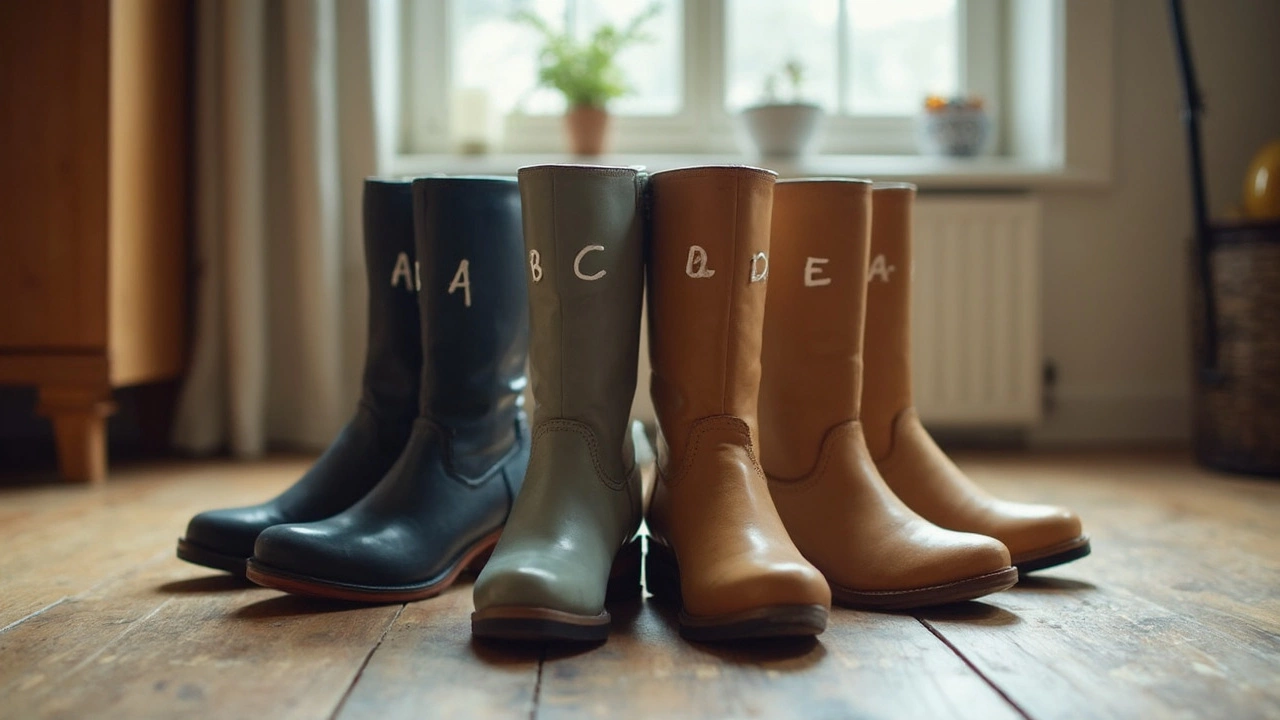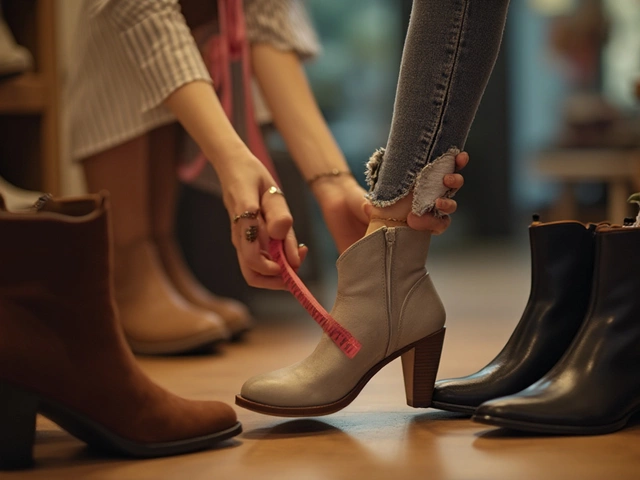Boots Fit Guide: Find Your Perfect Fit
If you’ve ever bought a pair of boots that felt great in the store but started hurting after a day, you’re not alone. Boots need a little more thought than a quick shoe size check. In this guide we’ll walk through the simple tests you can do at home, the signs that a boot is too tight or too loose, and quick fixes before you decide to send them back.
Key Fit Tests for Boots
First, grab the boot you’re testing and stand on a flat surface. Slide your foot into the boot, lace it up (or pull the zip), and do these three checks:
- Toe room. You should see about a thumb’s width (around ½ inch) between your longest toe and the front of the boot. If your toes are touching the end when you walk, the boot will cramp and cause blisters.
- Heel hold. Walk a few steps. Your heel should stay snug against the back of the boot without lifting. If you notice a noticeable heel slip, the boot is either too big or the collar is too low.
- Arch support. Press down on the arch area. A well‑designed boot will have enough cushioning to keep your foot from flattening too much. If the arch collapses, you’ll feel foot fatigue fast.
These three checks catch 80% of fit problems. If everything feels right, you’ve probably found a good size.
Common Fit Problems and Fixes
Even a boot that passes the basic tests can have quirks. Below are the most frequent issues and how to handle them:
- Too tight at the toe box. Try using a shoe stretcher or stuffing the front with a thick sock for a few hours. If the material is leather, a professional stretch at a cobbler works best.
- Heel slipping. Adding a heel grip insert can fill the gap. You can also tighten the lacing pattern or use a thicker insole to push your foot back.
- Mid‑foot rubbing. A cushioned footbed can reduce friction. Look for pads that target the ball of the foot if that area feels sore.
- Cold feet. Insulated liners or wool socks add warmth without making the boot feel tighter.
Remember, a good boot should feel supportive, not restrictive. If you keep adjusting the fit but still feel discomfort, it’s better to exchange for a different model or width.
Our boutique in Elgin carries a range of handcrafted boots, each made with quality leather that molds to your foot over time. When you try them on, use the fit tests above and ask our staff for a quick heel‑grip check. We’re happy to suggest inserts or stretching services to get that perfect snug feel.
Choosing the right boot isn’t a gamble if you follow these steps. Clear toe room, secure heel, and solid arch support are the three pillars of a comfortable boot. Use this guide next time you shop, and say goodbye to sore feet and hello to stylish, reliable footwear.

What is D in Boots? Unraveling Women's Boot Sizing
Ever wonder what the 'D' stands for in women's boots? It actually relates to the width of the boot. Understanding this can make a world of difference when shopping for comfortable footwear. We'll explore the ins and outs of boot sizing, offering tips to find your perfect fit and avoid common pitfalls. No more guessing or painful shopping trips—get ready to step out in boots that feel tailor-made just for you.




